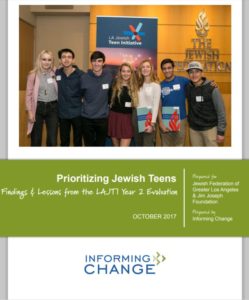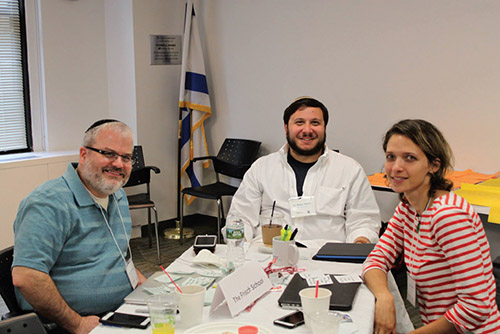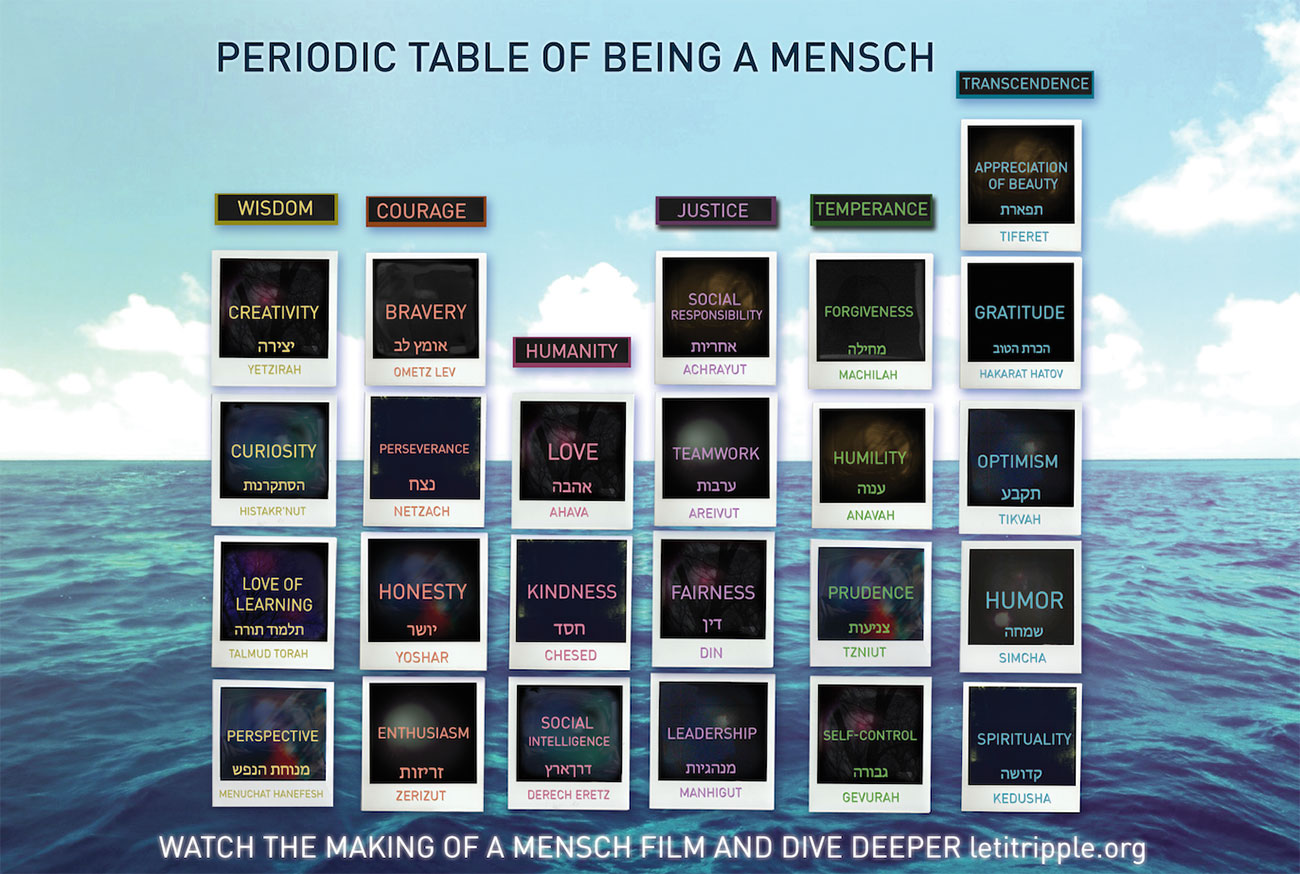In the year 5778, the future, it seems, is now. If someone 50 years ago time-traveled to today and saw the myriad technologies and devices that make possible working virtually, she would be amazed, to say the least. She would see a professional environment for many where video conference, shared screens (of all kinds), emails, texts, and other virtual communication are the norm. Wow.
In many regards, we are fortunate to operate with these options. Geography, and sometimes even budgets, suddenly become nearly irrelevant as people around the world can collaborate, learn from each other, and trouble-shoot challenges either in real-time or as soon as they’re able to check their smart phone. The timing and place is entirely up to the individual.
Yet, with this flexibility and the advantages that come with it, we also have experienced its limitations. The value of traditional in-person workspaces that provide face-to-face interactions remains an important balance to today’s technologies. In our capacities as implementers of Jewish teen initiatives at Combined Jewish Philanthropies in Boston and The JCC of Greater Baltimore, supported by The Associated: Jewish Community Federation of Baltimore, we’ve taken steps to facilitate opportunities for youth and teen professionals to come together in communal spaces. We’re doing this on limited budgets, so thinking strategically, and creatively is a must, as is experiencing the genuine impact in-person work environments have on these professionals, the teens with whom they work, and each of our communities’ landscape of teen Jewish experiences.
Going Against the Virtual Workplace Norm
Economics combined with the nature of responsibilities of a “regional” position means that many Jewish professionals, especially those who serve youth and teens, work out of their homes or are constantly on the road. They don’t have the traditional office and the natural interactions and environment that come with that. We know how common it is for these professionals to work remotely, floating from their home to coffee shops and elsewhere.
As anyone who has worked like this knows, it can be a lonely experience. Beyond that, there are elements of support systems, creative brainstorming, and knowledge-sharing that are lacking from the face-to-face, office workspace.
With this premise, we each looked for ways to create a communal workplace for professionals serving Jewish teens in our communities. We went about this in different ways, but have both seen positive results.
What’s Old is New: How to Bring People Together Today
In Boston, Margie regularly opens her home as a work space for anyone who is a youth or teen professional. It’s not surprising that professionals who have no offices come. What has been more surprising is that professionals who work in an office but not with others serving youth or teens come too. Why? Because we are building a community of youth professionals of which they want to be a part.
In fact, a collaborative grant proposal between local synagogues, a camp, a day school, and a community organization emerged directly from talks in this communal work environment. This proposal, which recently received funding from CJP, includes a teen engagement professional who shares her time with several of these organizations. Moreover, when people are together in this house, they help each other with marketing and publicity–both developing materials and simply knowing what other organizations are offering—troubleshooting challenges, brainstorming for programs, and simply turning to one another for professional development advice.
In Baltimore, 4Front—the name of the Jewish teen initiative—has office space that has become a hub of teen-focused activity. It’s a physical gathering space for teens and for the adults who care about them, which has strengthened relationships among professional colleagues and fostered collaboration. BBYO, for instance, has historically had an office at the JCC. It now sits intentionally in the same space as the 4Front staff in order to spark conversation and collaboration. A summer camp that needed to conduct teen interviews also has been invited to set up shop in 4Front, while part of the office is designated as a “swing space” for any youth or teen professional to come in and have a place to work. Additionally, one day a month, beginning this October, will be designated as an open and collaborative day where professionals know they can come to the office and interact with peers working there that same day.
From In-Person to Real Results
We’ve heard from the professionals themselves how much they look forward to these in-person opportunities. They recognize that building a community of peers working in their field contributes to their professional growth. And while professional development is an integral part of all of the community initiatives within the Jewish Teen Education and Engagement Funder Collaborative these interactions are different than learning a specific new approach or skill. These interactions offer support and foster connections that lead to professional success and positive feelings about one’s choice of work.
Importantly, there also are tangible results. Here’s how the teen Jewish landscape, and the professionals within it, have been positively influenced by working in the same physical space:
- Professional collaborations have developed around programs, marketing, and more—all efforts that occurred because professionals built trust and discussed their plans in ways that only happen in person.
- When these teen professionals come together around the table, literally and figuratively, the conversation is very congenial and collegial. This hasn’t always been the case. But being together and establishing some basic ground rules makes a real difference. One rule in Baltimore, for example, is that, when we gather together, no one can use the term “my teens.” This helps set the tone that every organization is in the same boat and reinforces the idea that we are collectively responsible for the welfare and engagement of all local Jewish teens.
- By bringing people together, professionals gain a better understanding of the entire landscape of teen Jewish experiences. They are able to help teens connect with the experiences and programs that best fit them and their interests.
- 4Front actually has entered into organizational relationships because it shares space with specific organizations. For example, it is hosting a NFTY event at the JCC, and NFTY is making use of 4Front’s staff and Jewish educators so they can interface with their teens as well. Soon 4Front also will begin a peer consultancy, where professionals can present a challenge they have in their work to the group, which then consults on that issue. Clearly this model only will work if each professional views peers as trusted, informed, and valued resources.
Traditional Models in a New Age
We are excited by these results and the relationships and collaborations created. Moving forward, we want to strengthen more of our community organizations so they can provide the highest quality and deeply meaningful Jewish experiences for teens. We do that by strengthening professionals and the connections between them. And while technology has a large role to play to that end in today’s work environments, it’s important not to lose sight of the value of face-to-face interactions. We have learned and already seen results that come from sharing space and engaging in-person. It’s simple, but powerful. Trust and sense of unity among professionals goes a long way.
Margie Bogdanow, LICSW, is a Senior Consultant for Teen Education and Engagement at Combined Jewish Philanthropies. Rabbi Dena Shaffer is Executive Director of 4Front Baltimore, the Teen Engagement Initiative at JCC Baltimore, which is supported by The Associated: Jewish Community Federation of Baltimore.


 Los Angeles (the Federation) and the Jim Joseph Foundation (the funders), launched in 2015 and just completed its second year of implementation. To achieve the ultimate goal of engaging Jewish teens in Los Angeles in activities that promote a healthy, personally meaningful, and fulfilled Jewish life, LAJTI has three main strategies:
Los Angeles (the Federation) and the Jim Joseph Foundation (the funders), launched in 2015 and just completed its second year of implementation. To achieve the ultimate goal of engaging Jewish teens in Los Angeles in activities that promote a healthy, personally meaningful, and fulfilled Jewish life, LAJTI has three main strategies:
 Supported by the Jim Joseph Foundation, Charles and Lynn Schusterman Family Foundation, and Lippman Kanfer Foundation for Living Torah, the study builds on the previous and ongoing work of the
Supported by the Jim Joseph Foundation, Charles and Lynn Schusterman Family Foundation, and Lippman Kanfer Foundation for Living Torah, the study builds on the previous and ongoing work of the  The goal of the project, titled “The People of the Book Enter 21st Century Learning,” is to benefit Frisch students “by creating a student-centered learning environment that can be replicated in multiple learning contexts and classrooms at The Frisch School, and using various technology-assisted tools to transform how students collaboratively engage with text,” said Zadoff.
The goal of the project, titled “The People of the Book Enter 21st Century Learning,” is to benefit Frisch students “by creating a student-centered learning environment that can be replicated in multiple learning contexts and classrooms at The Frisch School, and using various technology-assisted tools to transform how students collaboratively engage with text,” said Zadoff.